What is a US&R Taskforce?
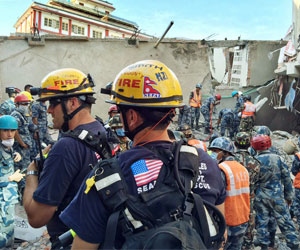 An Urban Search and Rescue Task Force is a multi-disciplined organization which conducts search, rescue, and recovery in technical rescue disciplines, including structural collapse, rope rescue, vehicle extrication, machinery extrication, confined space (permit-required, non-cave, non-mine), trench, excavation, water operations, and chemical, biological, radiological, nuclear, and explosives (CBRNE) defensive operations in a US&R environment. (See NIMS typing document below for specific information/capabilities for each type.)
An Urban Search and Rescue Task Force is a multi-disciplined organization which conducts search, rescue, and recovery in technical rescue disciplines, including structural collapse, rope rescue, vehicle extrication, machinery extrication, confined space (permit-required, non-cave, non-mine), trench, excavation, water operations, and chemical, biological, radiological, nuclear, and explosives (CBRNE) defensive operations in a US&R environment. (See NIMS typing document below for specific information/capabilities for each type.)
A US&R Task Force:
- Conducts search, rescue, and recovery, including:
- Wide-area search
- Structural collapse assessment, search, rescue, and rigging in light through heavy frame construction, including reinforced concrete
- Associated technical rope rescue (including highlines)
- Confined space search and rescue (permit-required, non-mine, non-cave)
- Trench and excavation rescue
- Mass transportation vehicle rescue (subway, rail, bus)
- Supporting the transport of service or companion animals with persons rescued
- Coordinates and conducts search and rescue response efforts for all hazards, including locating, accessing, medically stabilizing, and extricating survivors from the damaged structures or environments
- Operates in environments with and without infrastructure, including compromised access to roadways, utilities, transportation, and limited availability for shelter, food, and water
According to guidance from the National Incident Management System (NIMS) “Resource Typing Definitions for Mass Search and Rescue Operations”, a US&R task force may be typed 1-4. NIMS typing can be found on FEMA's website.
FEMA has 28 federal Type 1 US&R task forces located around the country (map/locations can be found at responsesystem.org). These task forces are air or ground deployable anywhere in the United States and to any US Territory. Each federal task force works under the direction of the Department of Homeland Security and is often times deployed in support of national emergencies. Typical missions for a federal task force include hurricane responses, wide geographic area searches (both land and water), standby missions for national special security events, and building collapses as found during a natural or man-made disaster. These missions are often conducted in cooperation with ESF-9 partners at the federal level.
Many states also have US&R task forces of various typing/size that may be requested for intrastate or interstate missions. There is currently a cataloging initiative underway by the IAFC to identify the specific type and location of these state US&R resources, but agencies are encouraged to contact their state emergency management agency or state ESF9 coordinator for specific resources located within their state or region.
All US&R task forces operate in support of the local incident command system, providing assistance where needed.
What are the components and capabilities of a US&R Taskforce?
Management
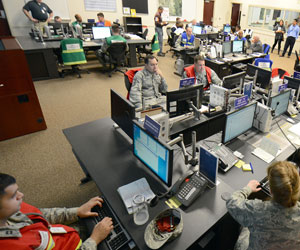
The management structure of a US&R task force provides overall leadership and coordination for task force operations. Positions include Task Force Leader, Safety Officer, Planning Team Manager, Search Team Manager, Rescue Team Manager, Logistics Team Manager, Hazardous Materials Team Manager, and Medical Team Manager (Physician).
Search
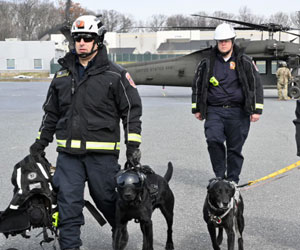
The search component of a US&R task force uses canines and technical/electronic search equipment to locate trapped survivors or victims. Positions include Search Team Manager, Canine Search Specialist, and Technical Search Specialist.
Rescue
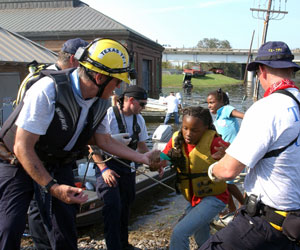
The rescue component of a US&R task force performs the extrication of trapped survivors by personnel skilled in cutting, shoring, lifting, and breaching steel, reinforced concrete, and other structural materials. Positions include Rescue Team Manager, Rescue Squad Officer, Rescue Specialist, and Heavy Equipment & Rigging Specialist.
Medical
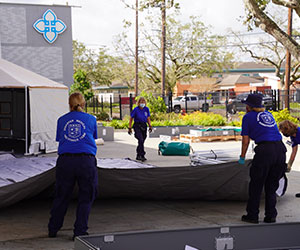
The medical component of a US&R task force provides pre‐hospital and emergency care for task force members and survivors and provides initial treatment for injured search canines. Medical Specialists are trained to treat crush syndrome and provide confined‐space medicine for rescued survivors. The medical component does not provide transport capability. Positions include Medical Team Manager (Physician) and Medical Specialist (Paramedic).
Planning
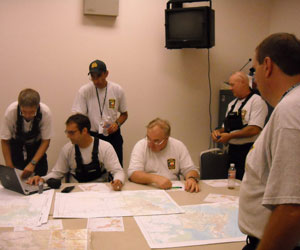
The planning component of a US&R task force provides support to the overall search and rescue mission including planning, hazard evaluation, structural integrity assessment, and technical documentation. Positions include Planning Team Manager, Technical Information Specialist, and Structures Specialist (Engineer).
Logistics
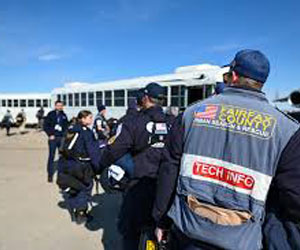
The logistics component of a US&R task force provides support to the overall search and rescue mission including logistical support, communications, mobilization and demobilization of personnel and equipment, and transportation support. Positions include Logistics Team Manager, Logistics Specialist, and Communications Specialist.
Hazardous Materials
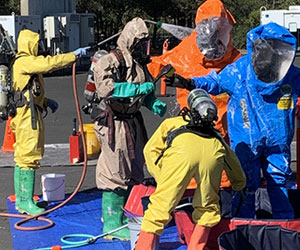
The hazardous materials component of a US&R task force provides initial and ongoing detection, identification, and monitoring, including initial mitigation and decontamination. The hazmat component supports the task force’s ability to operate in a contaminated environment specific to the agent detected. US&R hazmat teams does not have the mission of mitigating significant hazardous materials incidents. Decon capabilities are limited to emergency decon and decon of rescue personnel and small numbers of rescued victims only. Positions include Hazardous Materials Team Manager and Hazardous Materials Specialist. (A Type 1 task force has the ability to detect hazards with a variety of detection devices to include limited WMD events
Water Rescue
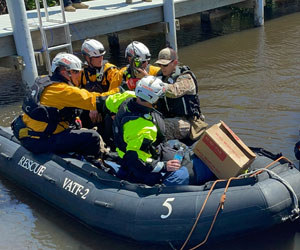
The water rescue component of a US&R task force conducts search and rescue operations in flood/water environments. Positions include Water Rescue Specialist and Boat Operator.
(See NIMS typing document for specific information about the capabilities of each task force, Type 1-4.)
Benefits of using a US&R
There are many challenges a fire chief is faced with after a disaster has hit their community. One of these challenges is the needed resources to respond during a disaster to locate and rescue victims. One valid resource that chiefs can use is Urban Search and Rescue (US&R) Team. These highly trained and disciplined teams can locate and rescue people trapped or in need of evacuation.
A US&R team can deploy in various sizes based on the mission and capability. When US&R teams are deployed, they are assigned to the local IC or authority having jurisdiction. US&R teams are capable of working in austere environments with no support for up to 72 hours. A US&R team can be a real solution in the time of need for any community. A team can provide comprehensive wide-area primary/secondary search, evacuate a hospital, and locate & rescue victims. US&R teams are multi-mission and highly capable teams.
To help fire chiefs understand and identify US&R teams in their local, state, tribal, territorial, and insular areas, the IAFC decided to elevate this discussion and implement the first US&R committee. The purpose of the Urban Search and Rescue (US&R) committee is to develop a process to identify and type state and local US&R teams. Another essential part of the committee is to catalog teams by identifying the kind, type, and location of the US&R teams in their region/state.
How do you request a US&R Taskforce?
It is important to remember that all disasters are locally-executed, state/territorially-managed, and federally-supported. Local fire and EMS departments are the first to respond to an incident and the last to leave. When your response needs surpass the capabilities of your local jurisdiction, you should first consider your mutual aid and any regional resources in your state.
Please reach out to your local, regional or state emergency manager to obtain assistance during a disaster. While each state and territory is unique, your local emergency manager has access to the process for requesting larger state, territorial, and/or federal resources through the state emergency manager. You or your local emergency manager should be able to contact your state/territorial emergency operations center, who can assist you with obtaining the necessary resources. The state/territorial emergency management agency also will be able to reach out to other states for assistance through the Emergency Management Assistance Compact (EMAC) or to FEMA to request a federal US&R team.
Before a disaster occurs:
- Learn what resources are available in your area as well as the process to request them.
- Review how to contact your local and state/territorial emergency management office.
FEMA Resource Typing Tool